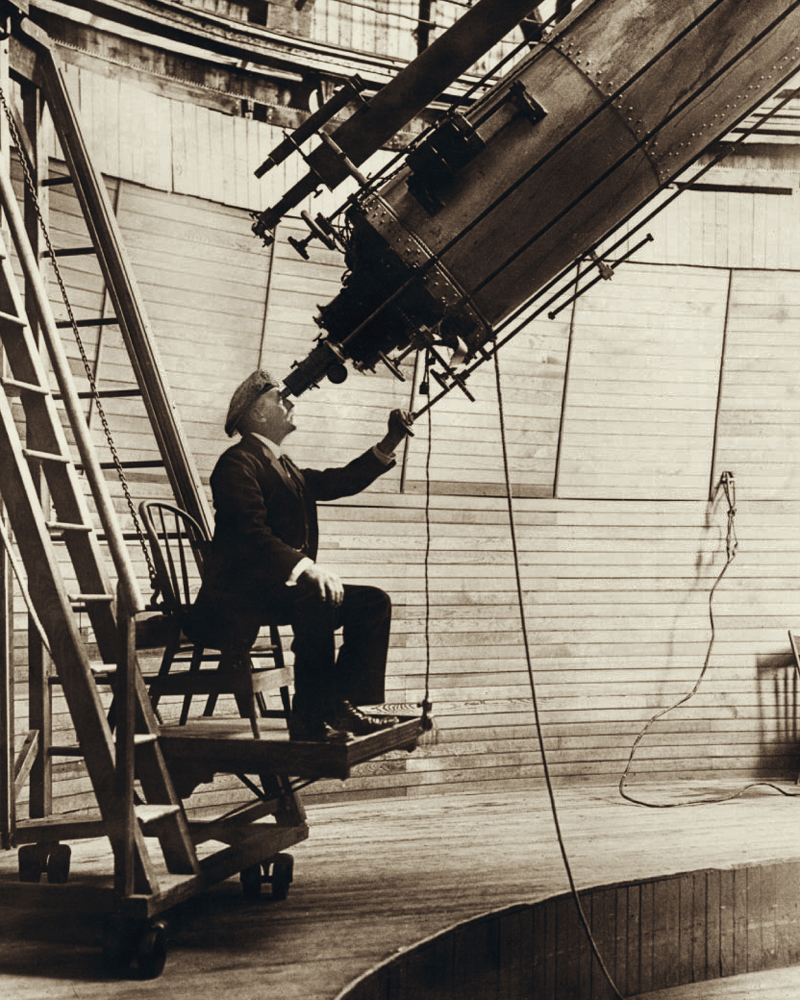
Planets beyond Neptune
Following the discovery of the planet Neptune in 1846, there was considerable speculation that another planet might exist beyond its orbit. The search began in the mid-19th century and continued at the start of the 20th with Percival Lowell's quest for Planet X. Lowell proposed the Planet X hypothesis to explain apparent discrepancies in the orbits of the giant planets, particularly Uranus and Neptune,[1] speculating that the gravity of a large unseen ninth planet could have perturbed Uranus enough to account for the irregularities.[2]
This article is about hypothetical planets. For known objects beyond Neptune, see Trans-Neptunian object.
Clyde Tombaugh's discovery of Pluto in 1930 appeared to validate Lowell's hypothesis, and Pluto was officially named the ninth planet. In 1978, Pluto was conclusively determined to be too small for its gravity to affect the giant planets, resulting in a brief search for a tenth planet. The search was largely abandoned in the early 1990s, when a study of measurements made by the Voyager 2 spacecraft found that the irregularities observed in Uranus's orbit were due to a slight overestimation of Neptune's mass.[3] After 1992, the discovery of numerous small icy objects with similar or even wider orbits than Pluto led to a debate over whether Pluto should remain a planet, or whether it and its neighbours should, like the asteroids, be given their own separate classification. Although a number of the larger members of this group were initially described as planets, in 2006 the International Astronomical Union (IAU) reclassified Pluto and its largest neighbours as dwarf planets, leaving Neptune the farthest known planet in the Solar System.[4]
While the astronomical community widely agrees that Planet X, as originally envisioned, does not exist, the concept of an as-yet-unobserved planet has been revived by a number of astronomers to explain other anomalies observed in the outer Solar System.[5] As of March 2014, observations with the WISE telescope have ruled out the possibility of a Saturn-sized object (95 Earth masses) out to 10,000 AU, and a Jupiter-sized (≈318 Earth masses) or larger object out to 26,000 AU.[6]
In 2014, based on similarities of the orbits of a group of recently discovered extreme trans-Neptunian objects, astronomers hypothesized the existence of a super-Earth or ice giant planet, 2 to 15 times the mass of the Earth and beyond 200 AU with possibly a highly inclined orbit at some 1,500 AU.[7] In 2016, further work showed this unknown distant planet is likely to be on an inclined, eccentric orbit that goes no closer than about 200 AU and no farther than about 1,200 AU from the Sun. The orbit is predicted to be anti-aligned to the clustered extreme trans-Neptunian objects.[8] Because Pluto is no longer considered a planet by the IAU, this new hypothetical object has become known as Planet Nine.[9]
As of 2023 the following observations severely constrain the mass and distance of any possible additional Solar System planet: